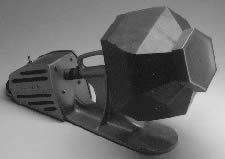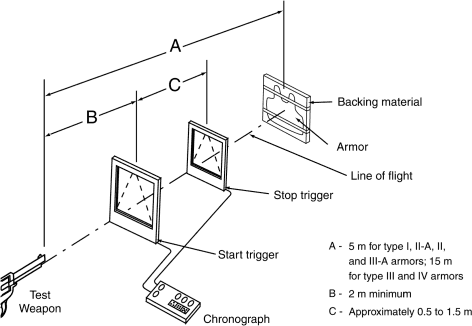Home | Glossary | Resources | Help | Contact Us | Course Map
Archival Notice
This is an archive page that is no longer being updated. It may contain outdated information and links may no longer function as originally intended.
Cleaning
Loaded cartridges are often covered in processing materials, excess sealant, and tiny chips of metal from cases and bullet jackets. Before inspection and testing, the cases must be cleaned. In a factory setting, it is common to tumble the cases in corn cob with a small amount of solvent. Tumbling live ammunition is not safe in a hobby environment. Factory tumblers are robustly constructed so that accidental firing (caused by the tip of a bullet striking the primer of another cartridge) does not pose a danger to the workers.
Ballistic Testing
After final assembly, the cartridges must be tested before packing and shipping. The testing process is similar for all classes of ammunition; they are tested against company standards as well as those recommended by the Sporting Arms and Ammunition Manufacturers Institute Inc. SAAMI. While the SAAMI standards are voluntary, failure to follow these may result in a product that is unsafe and dimensionally incompatible with some firearms.
The cartridges undergo testing in the following areas:
- Pressure testing
- Velocity testing
- Function firing
- Accuracy testing
- Customized specifications
- Cosmetic evaluation
Testing is destructive; tested cartridges are expended. Consequently, valid and reliable testing must be based on accepted statistical sampling procedures. Both in-process and final acceptance testing is performed. The samples tested must meet the pressure standards.
Sample cartridges are measured to ascertain that all physical dimensions meet factory specifications and the guidelines recommended by SAAMI. They are also examined for cosmetic defects.
Pressure
The most important factor in testing newly manufactured ammunition is to ensure that the pressure generated at firing does not exceed the standards.
Crusher testing is an obsolescent method that is still retained for some cartridges for which standards have not been converted to current methods. In this method, the test barrel is placed over the cartridge case and a steel piston touches the case. A soft copper rod (crusher) sits atop the piston and is restrained by an anvil. When the cartridge fires, pressure pierces the case and drives the piston into the copper crusher. This force shortens the crusher and the length is measured. Postfiring lengths are compared to calibration tables accompanying each lot of crushers to find the pressure value for each shot.
In the most commonly used method (piezoelectric transducer testing), cartridges are fired in a barrel fitted with sensors that detect pressure. When compressed, the transducer in the test barrel creates an electrical signal - the greater the pressure, the greater the signal. This method tests ammunition at a rapid rate with a high degree of accuracy.
Compared to transducer testing, crusher testing is extremely slow. Crusher testing provides only a snapshot of maximum pressure; there is no time reference. Transducer testing generates pressure readings over a period of time. If the output of ballistic pressure testing is compared to photography, crusher results are like low-resolution black-and-white snapshots; transducer results are like high-definition digital video clips.
Velocity and Function Firing
At the same time that the cartridge is tested for pressure, equipment mounted in the test tunnel determines the bullet velocity. Velocity is also a parameter that must fall within a range of values in order to ensure uniform performance and to reflect the advertised specifications for the load.
Function Firing
A portion of the statistical sample must be fired in production firearms. This is termed function firing . For each cartridge type, the most popular firearms likely to receive the ammunition are selected for testing. Semiautomatic arms are the most critical because they can malfunction due to minor changes in loading that would not show up in testing with a bolt-action firearm.
See the YouTube Terms of Service and Google Privacy Policy
Additional Online Courses
- What Every First Responding Officer Should Know About DNA Evidence
- Collecting DNA Evidence at Property Crime Scenes
- DNA – A Prosecutor’s Practice Notebook
- Crime Scene and DNA Basics
- Laboratory Safety Programs
- DNA Amplification
- Population Genetics and Statistics
- Non-STR DNA Markers: SNPs, Y-STRs, LCN and mtDNA
- Firearms Examiner Training
- Forensic DNA Education for Law Enforcement Decisionmakers
- What Every Investigator and Evidence Technician Should Know About DNA Evidence
- Principles of Forensic DNA for Officers of the Court
- Law 101: Legal Guide for the Forensic Expert
- Laboratory Orientation and Testing of Body Fluids and Tissues
- DNA Extraction and Quantitation
- STR Data Analysis and Interpretation
- Communication Skills, Report Writing, and Courtroom Testimony
- Español for Law Enforcement
- Amplified DNA Product Separation for Forensic Analysts




